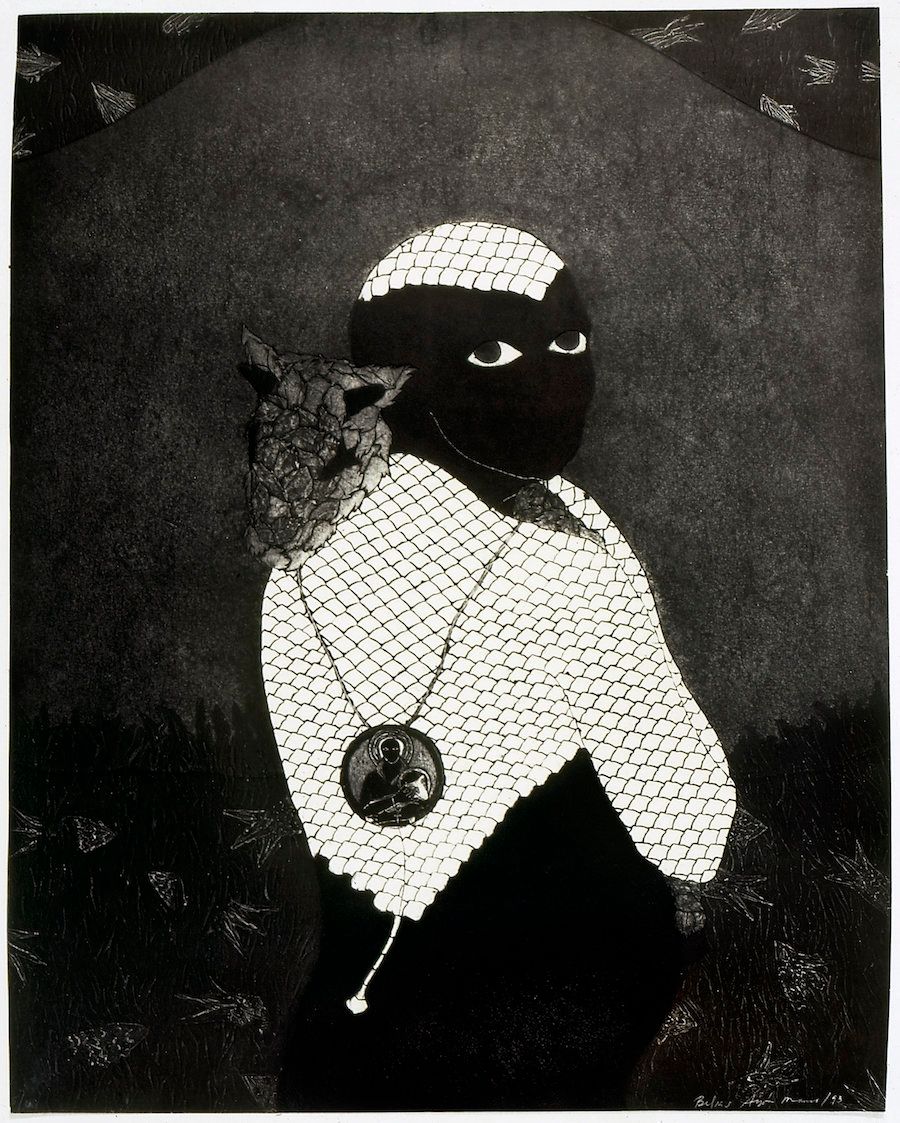The Abakuá is an all-male, Afro-Cuban secret society that originated in Nigeria and gained traction in 19th-century Cuba, where African slaves would covertly participate in the mysterious rites and rituals as means of protection and forging community.
Today, the mysterious Abakuá is the only prevalent secret society in Cuba. Through the centuries, one of the fundamental traditions of the brotherhood has remained constant: the secrets of the Abakuá must remain secret, at all costs.
The weight of this secrecy is palpable in the works of the late master printmaker Belkis Ayón, who made the Abakuá her primary subject matter. Throughout her career, the Afro-Cuban artist used the technique of collography to create sharp and unnerving representations of Abakuá folklore imbued with a feminist, intellectual edge. A retrospective of the artist’s works is on view now for the first time at a U.S. museum.
As part of her unique process, Ayón collaged a variety of textured materials ― from soft paper to sandpaper to vegetable peelings ― onto a cardboard matrix, which she’d then cover with ink and run through a printing press. By layering a wide range of surfaces with different feels and absorbencies, Ayón could precisely control her ink ― whether it came out thick and velvety or delicate and scaly, yielding prints that resembled meticulously sketched drawings.
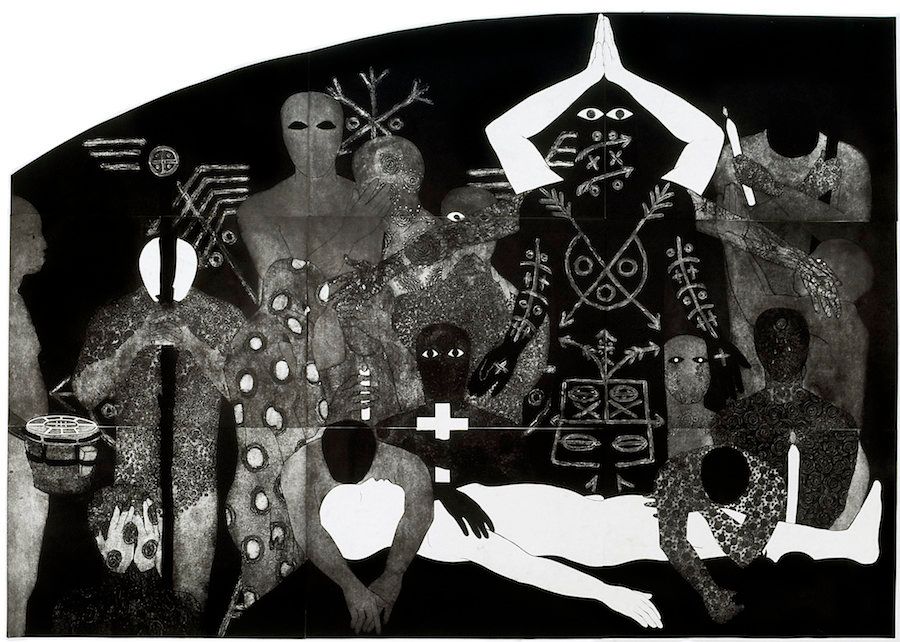
Ayón, who was born in Havana, Cuba, in 1967, became interested in the Abakuá and their mysterious traditions in 1985, when she was making art as a high school student. She was drawn, primarily, to the figure of Sikán, an African princess and the sole female character in Abakuá mythology.
According to legend, it was Sikán who originally discovered the magic of Abakuá, by accidentally trapping a fish who subsequently spoke to her in the mystical “voice” of Abakuá. Since women were banned from knowing the organization’s deepest secrets, Sikán was sworn to secrecy. The princess, however, gave in to temptation and divulged her forbidden knowledge to her fiancée; her life was sacrificed as a result.
In Abakuá lore, Sikán is killed for her transgressions. But in Ayón’s works, the figure is brought back to life, in part serving as a proxy for the artist herself. As Ayón put it: “I see myself as Sikán, in a certain way an observer, an intermediary and a revealer,” an exhibition statement from the Fowler Museum recounts her saying. “Sikán is a transgressor, and as such I see her, and I see myself.”
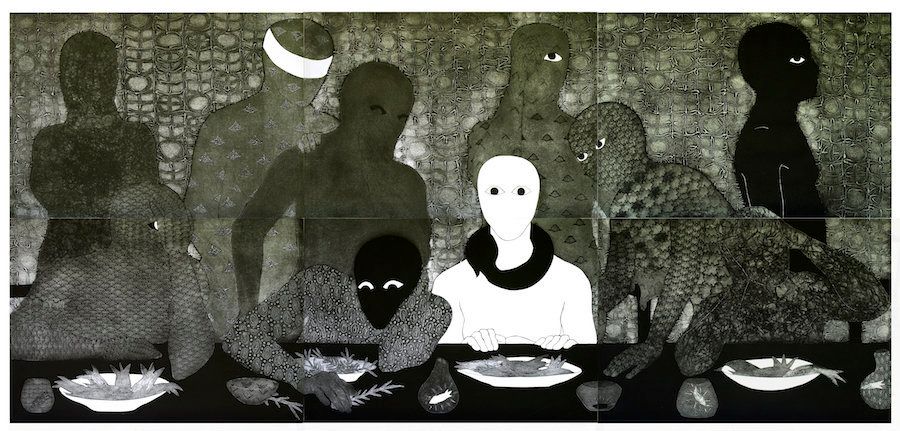
Like the princess, Ayón tests the limits of secrecy enshrouding the Abakuá, saturating her prints with graphic symbols and visual riddles ― sacred fish, roosters, goats, medallions, and snakes. The foreboding presence of silence bleeds through Ayón’s artistic style, in which humans appear as flattened figures in greyscale hues, endowed with large, expressive eyes and no mouths.
“These figures can look at you but cannot speak,” art historian Cristina Figueroa explained in an interview with NPR. “So you have to interpret what they’re trying to say through the expressions in their eyes.”
Furthermore, Ayón injects the all-male narrative of the Abakuá with feminine presence in her prints, accomplishing in art what could never manifest in real life. In “La cena (The Supper),” she riffs off the familiar image of The Last Supper, with Sikán replacing Jesus at the center of the table, and an assembly of lattice-laden shadow figures, also women, at her sides.
Together Sikán and Ayón challenged a realm of knowledge ordained solely for men, art serving as an alternative means of communication that rests on the power of the eyes, not the tongue.
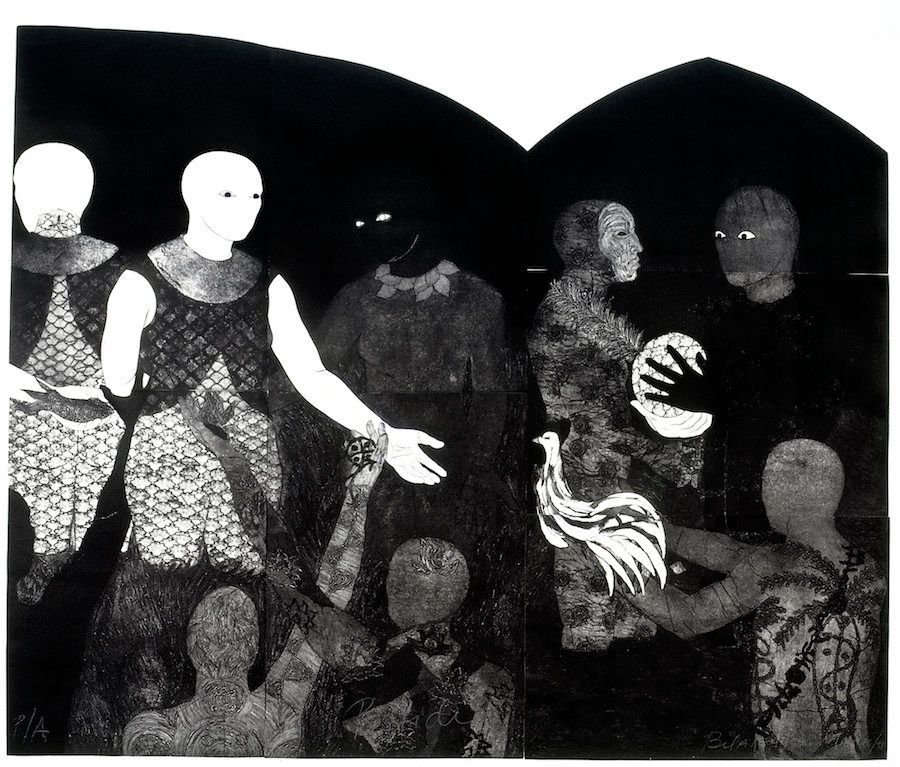
Another, more sinister connection between Sikán and Ayón emerged on Sept. 11, 1999, when the artist shot herself with her father’s gun at just 32 years old. At the time of her death, Ayón was already a famed figure in the Cuban art world, having shown at the Venice Biennale in ‘93 and sold works to both MOCA and MoMA. For her loved ones, Ayón’s death was a complete and utter surprise, a mystery oddly akin to the shadowy scenarios that served as her subject matter.
Cuban police allegedly investigated the possibility that the Abakuá was behind Ayón’s death, perhaps for revealing some fraternal secret or disrespecting its boundaries, but later ruled that suspicion out. The artist’s death was deemed a suicide, a conclusion with which her family agrees. Still, a sense of uncertainty looms over the event; a riddle that will never be fully solved.
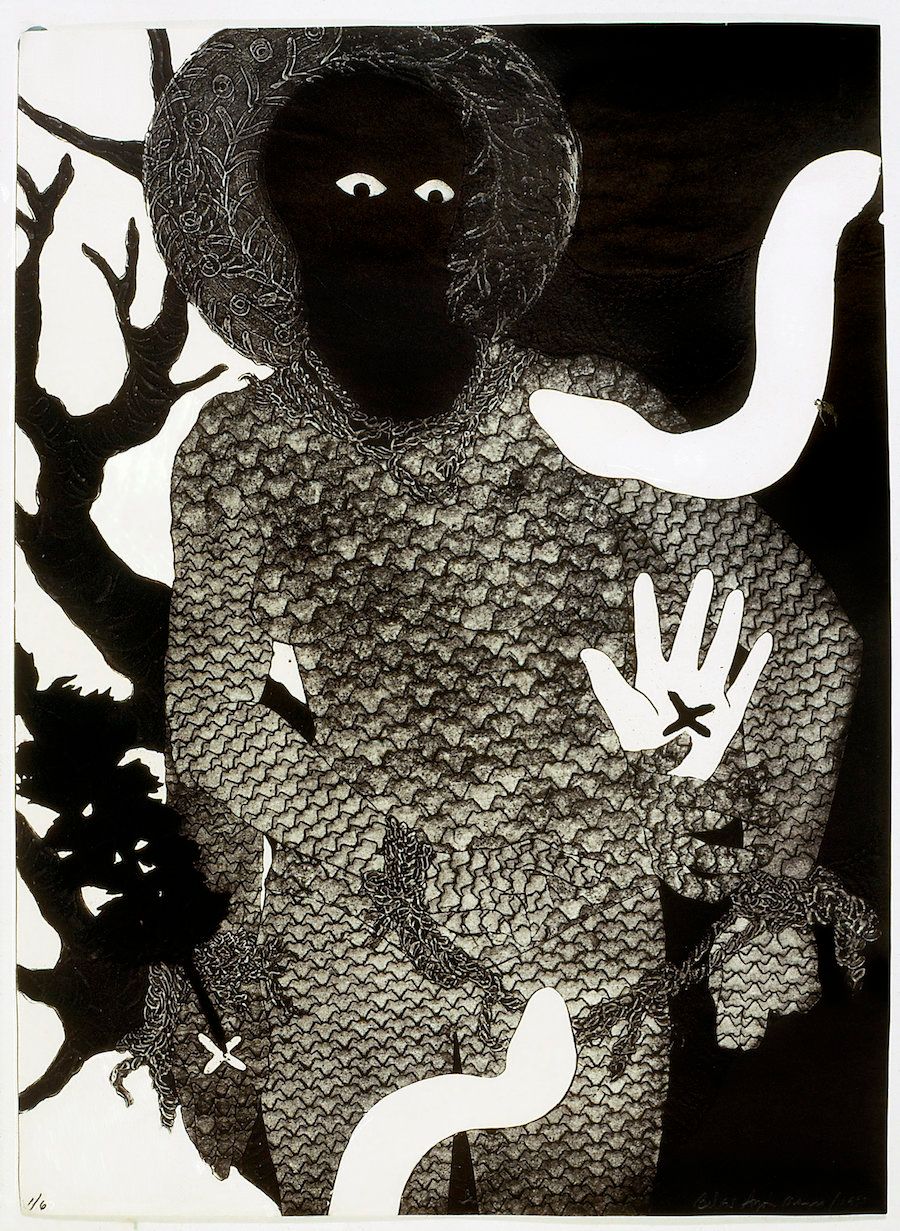
Following her death, Ayón’s family has worked tirelessly to preserve her oeuvre and share it with the world. Her sister gave up her career as a doctor to conserve the works, a challenge outside of a museum in Cuba’s humid atmosphere. It has long been a dream of Ayón’s family to see her work exhibited and celebrated around the world, making her first U.S. retrospective a truly momentous event.
“Nkame: A Retrospective of Cuban Printmaker Belkis Ayón” is organized by the Belkis Ayón Estate and Ayón Manso with the Fowler Museum in Los Angeles, guest-curated by Cristina Vives-Figueroa. The show, whose title translates to “greeting” and “praise” in the language of Abakuá, is divided into five parts, tracing the evolution of Ayón’s technique and career.
Recent strides in diplomatic relations between Cuba and the U.S. have enabled Ayón’s work to travel further than once seemed possible. “Here in Cuba, we always keep hope for everything,” the artist’s niece, Yadira Leyva Ayón, told The LA Times. “And we have hope that now, so many people will see Belkis’ work. It’s important for our culture and our family. She was a very outstanding artist and person. And this way, we keep her alive.”





